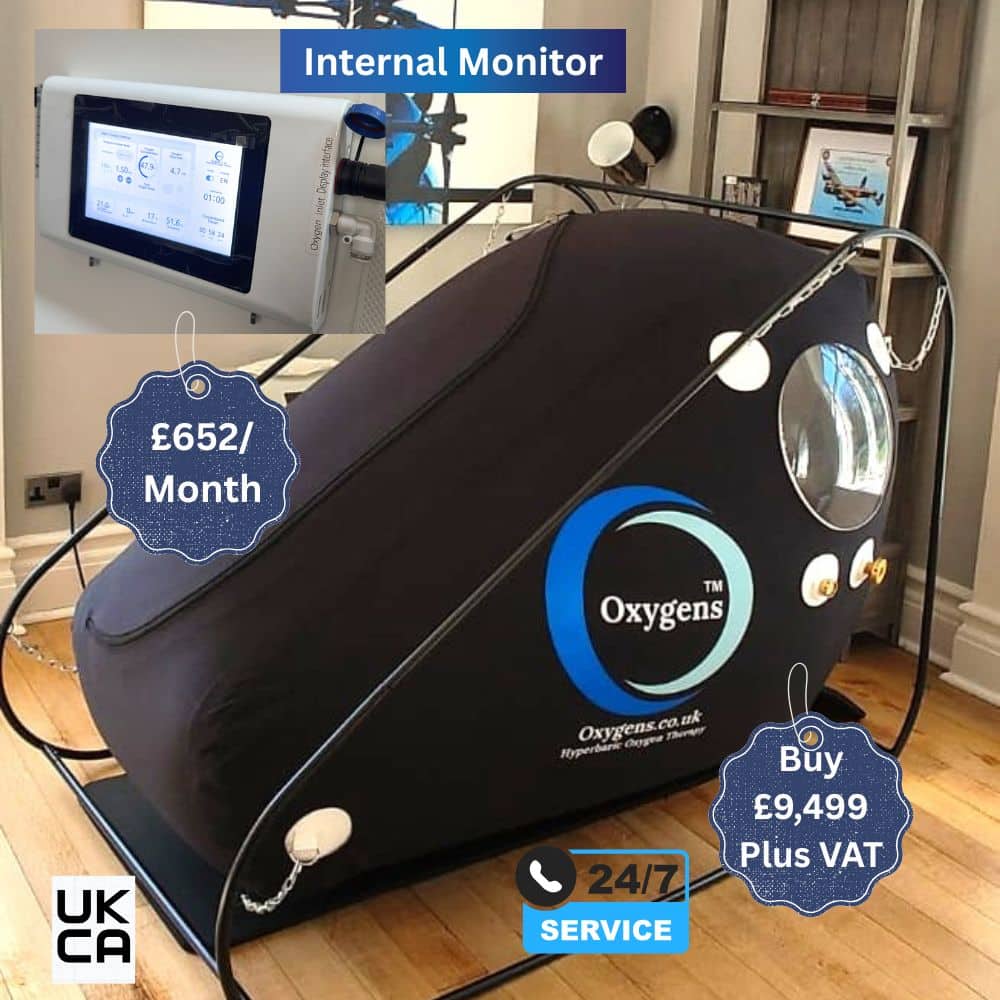Exploring the Science: Dr. Jason Sonners’ Groundbreaking Study on Mild vs. High-Pressure Hyperbaric Oxygen Therapy
At Oxygens, we’re proud to support and share the latest developments in hyperbaric oxygen therapy (HBOT). One of the most exciting recent contributions comes from Dr. Jason Sonners — a respected clinician, educator, and now PhD researcher in molecular biology with a focus on regenerative medicine. His recently published video shares insights from his doctoral research, and it addresses a critical question that’s long divided the HBOT field:
What are the physiological differences between mild (1.3 1.5 ATA) and high-pressure (2.0 ATA) hyperbaric oxygen treatments?
This question is particularly relevant to many of our clients who use soft chambers at home and want to understand how their treatments compare to clinical protocols using hard chambers.
Why This Research Matters
Until now, there’s been a gap in the literature comparing different HBOT pressures using the same metrics in a controlled setting. Dr. Sonners’ frustration with this lack of clarity — and his integrity in wanting to give his patients honest, evidence-based answers — led him to pursue a PhD and design a study to directly compare 1.3 ATA and 2.0 ATA HBOT in healthy, non-diagnosed individuals.
This is the first comparative study of its kind to measure inflammation, cognitive performance, and epigenetic changes across both pressure protocols — making it a pivotal step toward developing more personalized and effective treatment plans.
Study Design in Brief
The study involved:
- Three groups: mild HBOT (1.3 ATA with 100% oxygen), high-pressure HBOT (2.0 ATA with 100% oxygen), and a control group (no treatment).
- Treatment schedule: 100 minutes per session, 3 times per week, for two 5-week blocks (with a 4-week break between).
- Follow-up crossover: After 14 weeks, the control group was split and placed into treatment groups to validate results.
- Participants: 40–70 years old, mixed gender, no prior HBOT experience, and generally healthy.
Key measurements included:
- 81-marker cytokine panel (to assess inflammation)
- Computerized cognitive testing (NeuroTrax)
- Genome-wide DNA methylation panel (900 markers related to epigenetics and biological aging)
Key Findings: Mild vs. High Pressure
1. Inflammation (Cytokines)
Both pressure groups significantly reduced inflammation — with some fascinating distinctions:
- 21 cytokines significantly reduced in the mild group
- 20 significantly reduced in the high group
- About 8–9 overlapped, but some were exclusive to each pressure level
➡️ Takeaway: Low pressure is not simply a weaker version of high pressure. Each has distinct biological effects on inflammation.
2. Cognitive Performance
There were notable improvements in cognitive function, particularly memory:
- Memory scores improved significantly in both groups
- Other areas (motor skills, working memory) trended upward, though not always significantly
➡️ Takeaway: Even at 1.3 ATA, HBOT appears to have measurable cognitive benefits, especially over time.
3. Epigenetic Changes
This was perhaps the most remarkable part of the study:
- High-pressure group: 134 differentially methylated loci (DMLs)
- Mild-pressure group: 27 DMLs
- No overlap between the two sets — each pressure influenced entirely different genes
Additionally, both groups showed reduced biological age and increased methylation, which may correlate with healthier aging.
➡️ Takeaway: Both protocols positively affect cellular function, but in very different genetic ways. This opens exciting new possibilities for pressure-specific treatment plans.
Why This Is So Important for the HBOT Community
As HBOT continues to grow in popularity, clarity is essential. Claims that “mild does everything high pressure does” or that “mild does nothing” are both oversimplified. Dr. Sonners’ research brings balance and scientific depth to the conversation.
At Oxygens, we’re particularly excited about the finding that three sessions per week were sufficient to produce statistically significant changes — a schedule far more achievable for most people than the five sessions/week used in many studies. Even more interesting is that most benefits appeared after the second five-week block, reinforcing what we already observe in clinical and home use: HBOT results accumulate over time.
Final Thoughts
Dr. Sonners’ pilot study is a major step forward for hyperbaric medicine. It affirms the benefits of both soft and hard chambers — while highlighting the need for individualized protocols based on goals, patient profiles, and available equipment.
We’re grateful for the integrity and scientific rigor that went into this research and will be watching closely as future studies build on this work. At Oxygens, we’ll continue to support our community with products, service, and education rooted in the latest science.
To explore Dr. Sonners’ full video and stay up to date with his future releases, you can find the original research overview on his YouTube channel HBOT Research: Low vs High Pressure – Surprising Results



